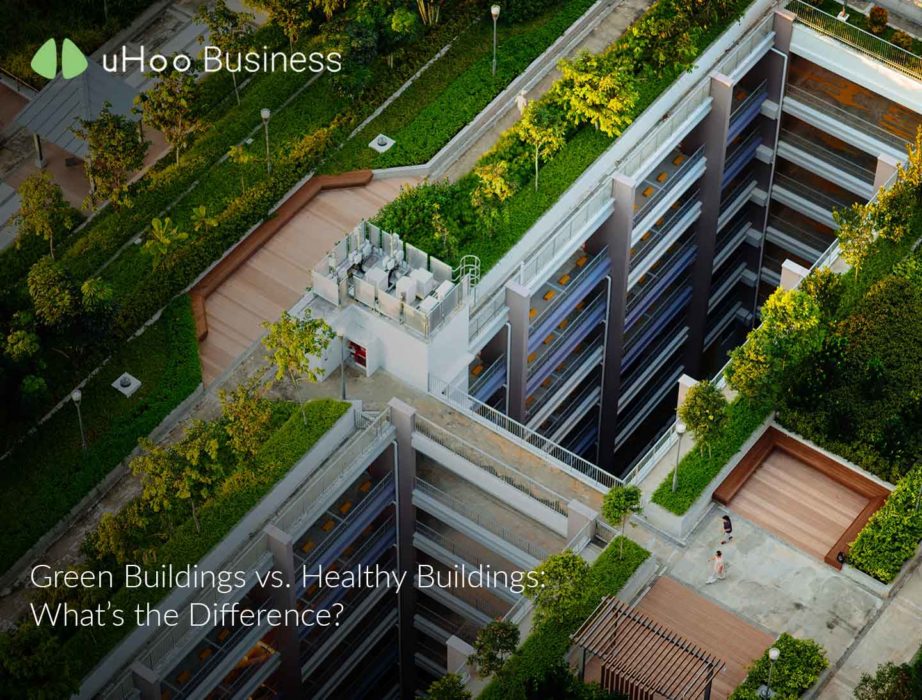With the modern work being done in meeting rooms, conference areas and cubicles, and with school establishments, malls, shopping centers, cinemas and apartment complexes blossoming right here and there – surely, buildings play a huge part of our urban lives and whether we like it or not, most of us are going to spend many years being in it.
While buildings are known to serve us most of our societal needs, we should also start to look more closely and examine how these built spaces affect the environment and the health of the people using them — this is where conversations about “green buildings” and “healthy buildings” begin to take off.
Building managers, facility owners or anyone concerned with adopting green and healthy practices must deeply understand what these terms mean and how they differ from each other. Here’s our take on it:
What is a Green Building?
The World Green Building Council defines green building as an establishment wherein its design, construction or operation reduces or eliminates negative effects and creates positive impacts on our climate and natural environment. These green buildings are established to preserve precious natural resources and improve our quality of life.
The main agenda of green buildings is to enhance the current situation of the environment and contribute to sustainability. Common green building practices include using eco-friendly building and construction materials, increasing energy efficiency, reducing air pollution and improving indoor environmental quality.
The urban and natural environment shall also be considered when making design, operational and construction planning and decisions.
Benefits of a Green Building
- Environmental conservation – through its philosophies and practices, green buildings can significantly reduce waste, greenhouse gas emissions and promote energy efficiency. To measure the claim, the Department of Energy reviewed 22 LEED-certified buildings and found out that these buildings produce 34% lower carbon emissions, consume 25% less energy and 11% less water.
- Work Satisfaction – a study has found out that there is a preference bias for green buildings, employees consider the environmental features of a green building to be more pleasant and agreeable than the ones of traditional buildings. Also, the natural-based characteristics of green buildings can boost satisfaction at work.
- Business Savings – the reduction in energy and water consumption leads to a decrease in operating cost and improved savings.
The green building market holds a strong promise in Asia. In 2019, the International Finance Corporation (IFC), a global development organization and a sister institution of the World Bank, published a report about green buildings, stressing the best practices that investors, developers and the government can adopt. The report also showed that green buildings are one of the largest investment opportunities in the coming years — with a $24.7 trillion investment opportunity by 2030.
What is a Healthy Building?
While green buildings prioritize the mitigation of the negative environmental impact of built establishments, healthy buildings are giving emphasis on health and human experience.
A healthy building is described as an establishment that supports the physical, social and psychological wellbeing of its occupants in the way it is designed, built and maintained. Factors to be considered when making buildings healthy include:
- Indoor air quality
- Water quality
- Safety and security
- Lighting and view
- Site selection
- Building design
Benefits of a Healthy Building
- Reduced health risks – Assessing the presence of air pollutants Improving indoor air quality in healthy buildings can reduce employees’ risk of developing health issues like asthma, lung cancer and other respiratory ailments.
- Improved productivity and work performance – employees that are healthier and less exposed to pollutants have fewer sickness-related absences and are known to have improved work outcomes.
- Increases employee comfort – well-ventilated spaces, breathable indoor air quality and thermal comfort are known to reduce distraction and irritation among employees. It also leads to a happier, satisfied and energetic workforce knowing that the indoor environment is well maintained.
A report has identified that COVID-19 has strengthened the importance of health in investment decisions, with almost 90% of respondents sharing their intent to improve health-related asset management strategies in the coming years. The report also highlights the increasing investor awareness on the importance of health and wellbeing to their Environmental, Social and Governance (ESG) performance, giving focus on the “S” of the term ESG.
Can a building be both green and healthy?
Green and healthy buildings may have separate definitions, procedures and intentions, but the features and practices implemented for each building will have a positive effect on the other.
One of the perfect examples is improving indoor air quality. Improving indoor air is vital to ensure employee welfare, which covers the purpose of a healthy building. On the other hand, making enhancements on indoor air quality promotes efficient energy use thereby minimizing a building’s carbon emissions, which benefits the environment.
With the pandemic and all that has happened within the past years, it is necessary to pay more attention in establishing a healthy built environment to secure the future of human health. But working to improve health does not mean neglecting the current situation and the fate of the planet. In the end we should remember that the choices we make for the environment will have an enormous, long-lasting impact on its people.
References:
- https://www.usgbc.org/press/benefits-of-green-building
- https://www.frontiersin.org/articles/10.3389/fpsyg.2018.01583/full
- https://www.ifc.org/wps/wcm/connect/a6e06449-0819-4814-8e75-903d4f564731/59988-IFC-GreenBuildings-report_FINAL_1-30-20.pdf?MOD=AJPERES&CVID=m.TZbMU
- https://www.mysquaremetre.com/education/sustainable-real-estate-why-invest-in-green-buildings/
- https://www.prnewswire.com/news-releases/new-global-study-finds-covid-19-accelerating-investments-in-healthy-buildings-301259614.html



